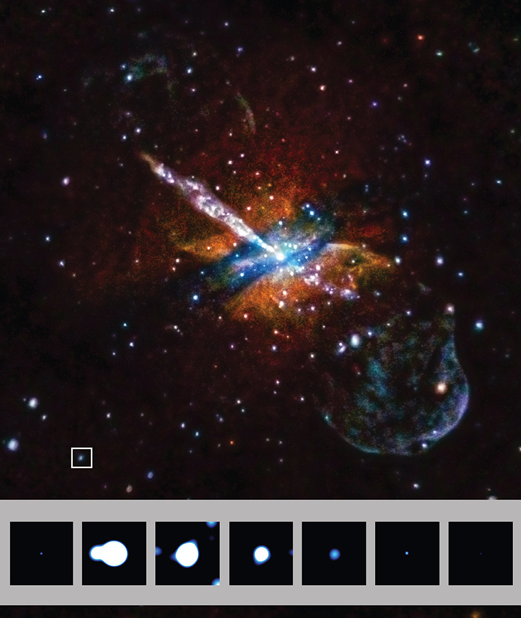 Credit: NASA/CXC/UA/J.Irwin et al.
Credit: NASA/CXC/UA/J.Irwin et al.
Astronomers detected a pair of mysterious X-ray sources that flare up and become about hundred times brighter in less than a minute while they return to their initial X-ray levels about an hour later. One of the sources is located near the galaxy NGC 4636 at a distance of 47 million light years. The second source is located near the galaxy NGC 5128 at a distance of 14 million light years. The observations were made using NASA’s Chandra X-ray Observatory and ESA’s XMM-Newton observatory.
The nature of these flares is unknown. At their peak these objects reach luminosities similar to the Ultraluminous X-ray sources (ULXs). ULXs are hundreds to thousands times more luminous in X-rays than typical binary systems, in which a star is orbiting a black hole or neutron star. Another class of objects that produce bright and rapid flares in X-rays is magnetars. Magnetars are neutron stars with powerful magnetic fields, but these objects decline their X-ray luminosity only a few seconds after a flare. Moreover, these sources are young while the new flaring objects reside in populations of old stars in elliptical galaxies, thus making unlikely to be young sources.
Since the characteristics of these new sources do not match with any known population, astronomers have begun to search for possible explanations. One hypothesis is that the flares represent episodes when matter is pulled away from a companion star that falls rapidly onto a black hole or neutron star. An alternative explanation could involve matter falling onto an intermediate mass black hole.
Publication: Irwin et al. 2016
Source: Chandra
